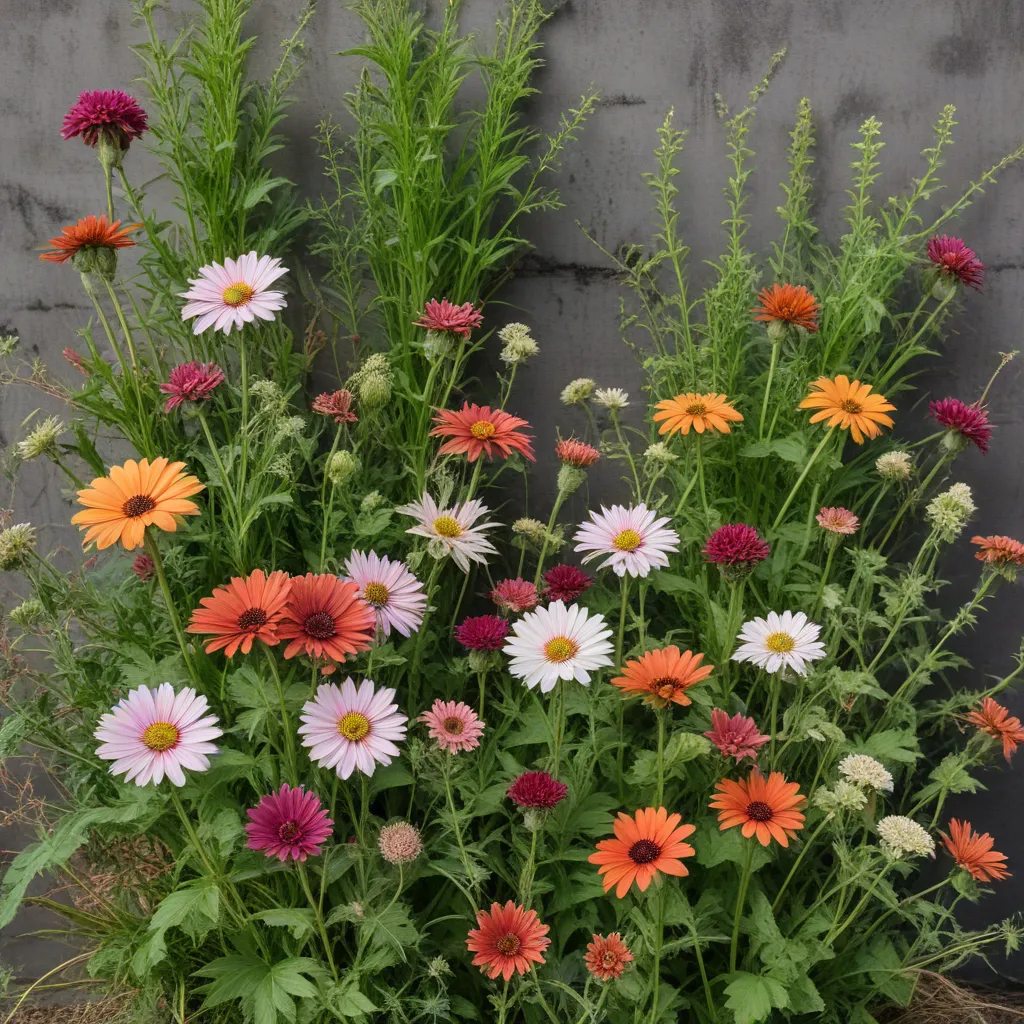
Embracing Weeds: Exploring Found Floral Design and Edibles
In the ever-evolving world of gardening and design, a fascinating trend has emerged – the embrace of “weeds” as a sustainable and beautiful resource. Foraged from nature’s bounty, these unexpected plants are redefining the way we approach floral arrangements and culinary creations.
The Allure of Weeds
The term “weed” often carries a negative connotation, conjuring images of unwanted, unruly plants that disrupt our carefully curated landscapes. However, a closer look reveals the hidden charm and utility of these so-called weeds. From the delicate blooms of the dandelion to the vibrant foliage of the purslane, these botanical wanderers possess an undeniable allure.
Embracing weeds as a design element allows us to appreciate the beauty inherent in the wild. Floral designer and landscape architect Claire, from The Garden Diaries blog, explains, “Foraging for flowers further afield on the roadsides is something that I do as I walk my dog through my suburban country roads. No need to buy some fresh flowers that have been picked a week ago in a foreign country, I go outside my property to find what is growing in the fields.”
This shift in perspective has given rise to a new aesthetic – one that celebrates the organic, the untamed, and the unexpected. By integrating weeds into our floral arrangements and culinary creations, we not only reduce our reliance on traditional, often resource-intensive options, but we also forge a deeper connection with the natural world around us.
Principles of Found Floral Design
The art of “found floral design” lies in the skillful curation and arrangement of materials sourced directly from nature. Rather than relying on commercially grown flowers, designers like Claire seek out the hidden gems that thrive within their local ecosystems.
The key principles of found floral design include:
Sourcing Materials from Nature: Whether it’s a roadside field, a backyard garden, or a woodland path, the designer’s keen eye scans for unique and captivating plant materials. This could range from delicate wildflowers to sturdy foraged foliage, each offering its own distinct character.
Composition and Arrangement Techniques: Once the raw materials have been gathered, the designer’s creativity takes center stage. By using natural structures, such as the branching patterns of weeds or the curved stems of edible plants, they construct arrangements that are both visually striking and organically inspired.
Incorporating Weeds into Floral Creations: Rather than shunning the so-called weeds, found floral designers embrace their unique qualities. Sprays of cherry tomatoes, pea tendrils, or even the vibrant blooms of common dandelions can add unexpected depth and texture to a bouquet.
This approach to floral design not only reduces the environmental impact of traditional methods but also encourages a deeper appreciation for the natural world. As Claire notes, “With garden style arranging, you can go wild with your offerings and not worry about how much it will cost.”
Culinary Potential of Weeds
The exploration of weeds extends beyond the realm of floral design, as many of these plants harbor unexpected culinary potential. By reframing our perception of “weeds,” we can unlock a world of nutritious and delicious ingredients that have been hiding in plain sight.
Edible weeds, such as purslane, dandelion greens, and chicory, offer a wealth of vitamins, minerals, and antioxidants. These plants, once dismissed as nuisances, can be transformed into vibrant salads, sautéed side dishes, or even incorporated into jams and chutneys.
“Using sprays of cherry tomatoes, pea tendrils, or berries added another dimension that you won’t see in any florist shop bouquet,” Claire observes. “Another standout for me has been the great diversity of foliage available in the garden instead of the over-used Bakers Fern seen in many floral shop offerings.”
Embracing weeds in the kitchen not only broadens our culinary horizons but also encourages sustainable practices. By foraging for edible plants, we reduce our reliance on store-bought produce and minimize the environmental impact associated with long-distance food transport.
Ecological Considerations
As designers and home gardeners embrace the wonders of weeds, it’s essential to consider the ecological implications of our actions. Responsible foraging and integration of these plants into our landscapes can foster biodiversity and promote a healthier, more resilient ecosystem.
“No need to buy some fresh flowers that have been picked a week ago in a foreign country, I go outside my property to find what is growing in the fields,” Claire explains. This approach not only reduces the carbon footprint associated with imported flowers but also supports local plant communities.
When incorporating weeds into our designs and culinary creations, it’s crucial to ensure we’re not inadvertently harming fragile ecosystems. Ethical foraging practices, such as leaving behind a portion of the plant material and avoiding over-harvesting, can help maintain the delicate balance of natural habitats.
Moreover, integrating weeds into our landscaping can contribute to the overall health and diversity of the ecosystem. Many of these plants serve as crucial food sources and habitats for pollinators, birds, and other wildlife. By embracing weeds, we can create a more resilient and ecologically balanced garden that supports the natural cycles of life.
As we continue to explore the beauty and versatility of weeds, let us do so with a deep respect for the natural world. By harnessing the power of these unexpected plants, we can cultivate a more sustainable, nourishing, and aesthetically captivating future – one that celebrates the inherent worth of the wild.
